
MOST UNDERRATED MAN IN FRONTIER HISTORY, BENJAMIN LOGAN
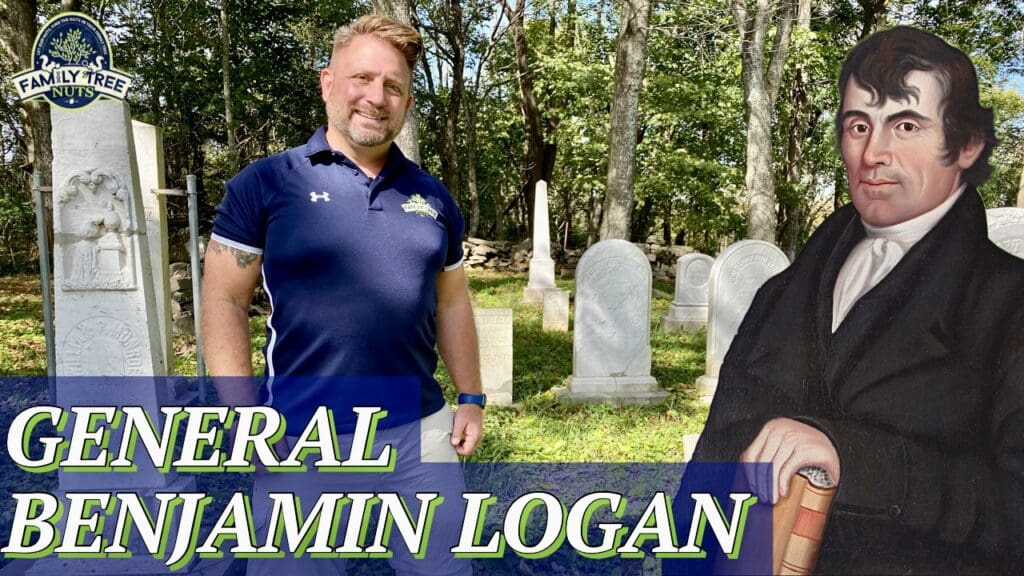
One of the most important Kentucky founders is buried on the edge of a cornfield and a creek bank. General Benjamin Logan. Benjamin Logan was born in 1742, in Augusta County, Virginia. An interesting not well-known fact about him is that he married Ann Montgomery, whose sister married Colonel William Casey, the namesake of Casey County, Kentucky. William Casey is the great-grandfather of Samuel Clemens, better known as Mark Twain. That makes Benjamin Logan, the Great-Grand Uncle of Twain.
General Logan had a life of military and public service. His first military action took place in 1764, when he served with the Virginia Militia in Henry Bouquet’s campaign against the Shawnee. In 1774, he served with many notable frontiersmen as a lieutenant in Lord Dunmore’s War. Then in May 1775, just a few weeks after Daniel Boone lead his axman to build Boonsborough, Logan and his friend John Floyd separated from Boone’s Trace at Hazel Patch, and went further west where they established a settlement.
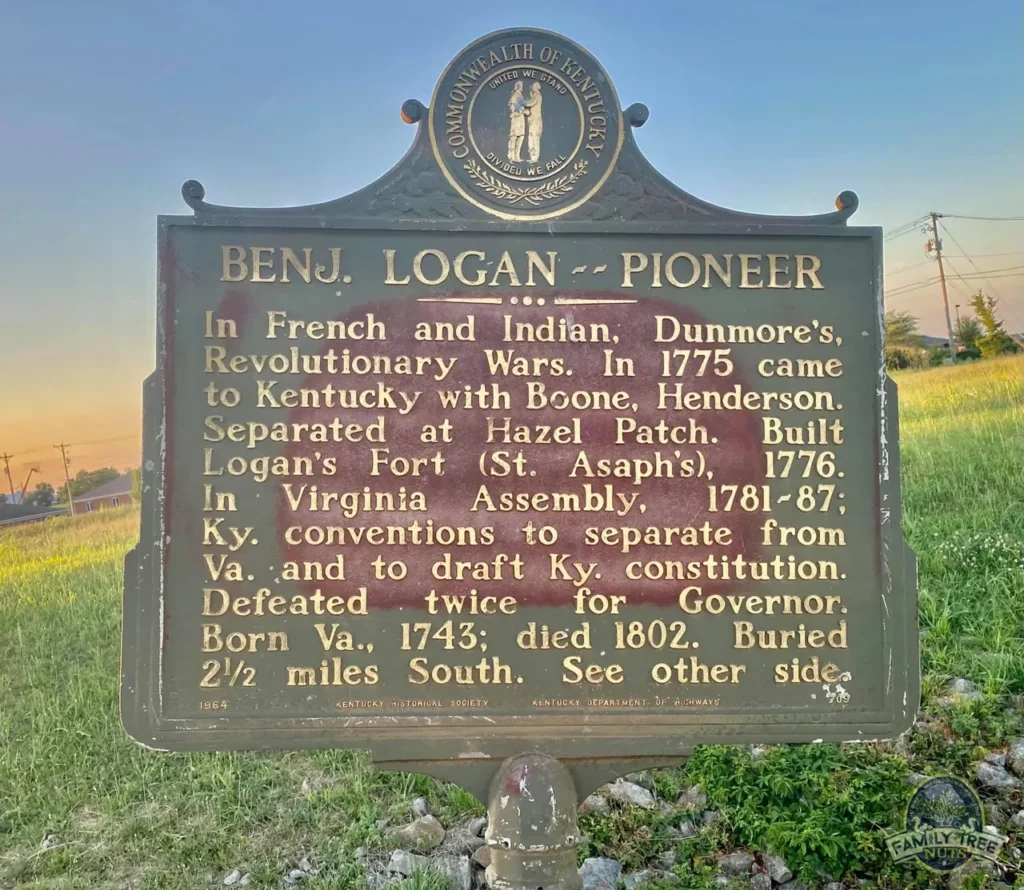
They named their settlement St. Asaph, because John Floyd was of Welsh descent and St. Asaph is the patron saint of Wales, and they arrived at the location on St. Asaph’s Day. Logan built a cabin and planted corn, which was one of Virginia’s requirements for claiming land. He then returned to Virginia for the winter. The next year, in 1776, he returned to St. Asaph with his wife Jane, his son David, their slave Molly and her three sons, Matt, Dave, and Isaac. Work was started immediately on Logan’s Fort and it was finished in 1777. The fort was only about 90 feet by 150 feet, which is only about a third of the size of a football field.
Logan was appointed Sheriff and Justice of the Peace and he was also made second-in-command of the Militia of Kentucky County, Virginia. During this time, there was a tremendous amount of Native American attacks in the area. Logan sent his family to Fort Harrod for safety. Logan’s Fort was the scene of an epic siege on 30 May 1777. When the Shawnee failed to destroy the fort, they felt that it couldn’t be conquered, so they gave it the name of “Standing Fort”. Soon a town grew up all around the fort, which was named Stanford, for standing fort. Perhaps you’ve heard of the town of Stanford, in Lincoln County, Kentucky.
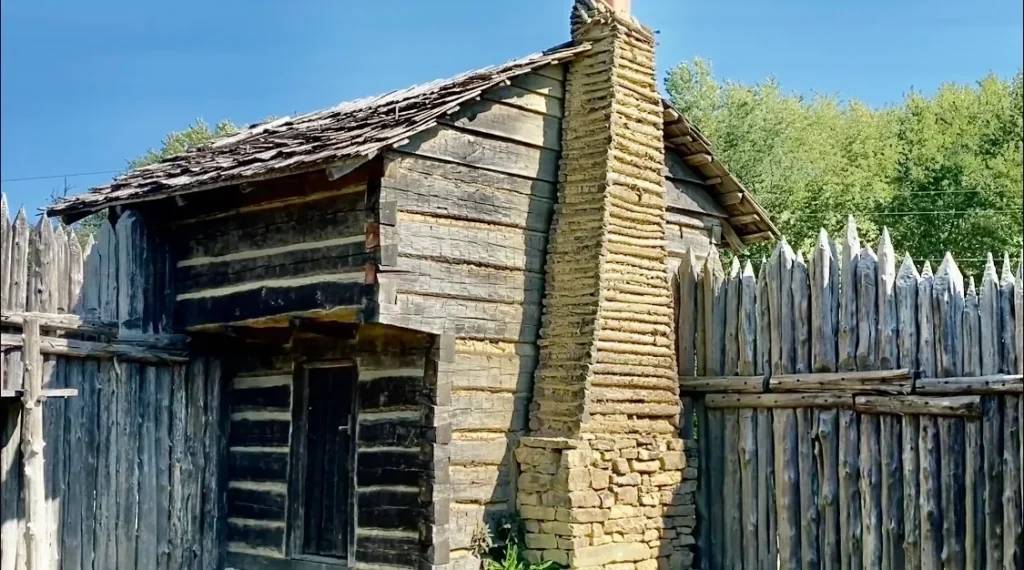
In 1778, Daniel Boone was brought to the fort and tried for treason. Earlier in February of that year, Daniel was in charge of a group of men that were making salt at Blue Licks. Shawnee warriors captured Daniel first and he convinced them to not kill the men that were making the salt. Daniel worked out a deal with the Shawnee that if they surrendered peaceably, they would not be killed, and none of the men except him would have to run a gauntlet. Some of the men were adopted into Shawnee families and others were taken as prisoners, the Fort Detroit Daniel was one of the men that was adopted by the Chief Blackfish.
Now over the next few months, Daniel earned the Shawnee’s trust and he was allowed to carry a rifle to hunt in the area. He began to hear talk of the Shawnee’s planned attack on Fort Boonesborough. His family was there at that fort and as soon as Daniel got the opportunity, he escaped from the Shawnee and ran the approximately 120 miles to Fort Boonesborough in only four days. When Daniel arrived at the fort, he was dressed and looked like a Shawnee. Many of the men at Fort Boonesborough thought that he had sold out the men, so that they could be captured by the Shawnee. Daniel led a war party into Ohio to a village to prove his innocence but that village was almost vacant, and the men realized that they had better get back to Boonsborough before the attack came from Chief Blackfish. Some believed that Daniel was trying to weaken the fort by leading men into Ohio.
After the Shawnee’s unsuccessful attempt to destroy Fort Boonesborough, Daniel was brought to Fort Logan for his trial. Daniel convinced the jury of his innocence and he was pardoned from the charges; however, he was aggravated to be charged by his friends of treason in the first place, and he soon led his family out of the fort and established Boone Station in 1779.
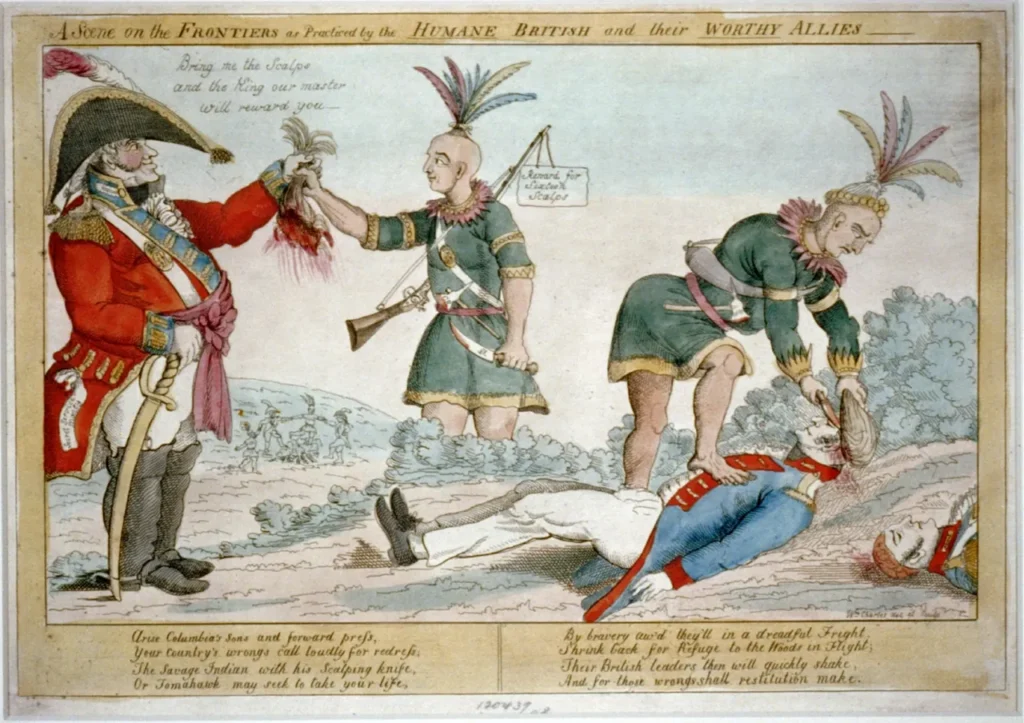
Also, in 1779, the hated British Lt Governor Henry “The Hairbuyer” Hamilton was brought to Logan’s Fort. General George Rogers Clark had captured Hamilton at Vincennes and Hamilton was being sent for imprisonment back east in Virginia, so he made a stop at Fort Logan. Now Henry “The Hairbuyer” Harrison was one of the most hated men on the frontier. He earned the nickname of “hairbuyer” because he would pay the Native Americans for white scalps. He also would pay them even more for white captives. This was one of the British tactics to weaken the American frontier.
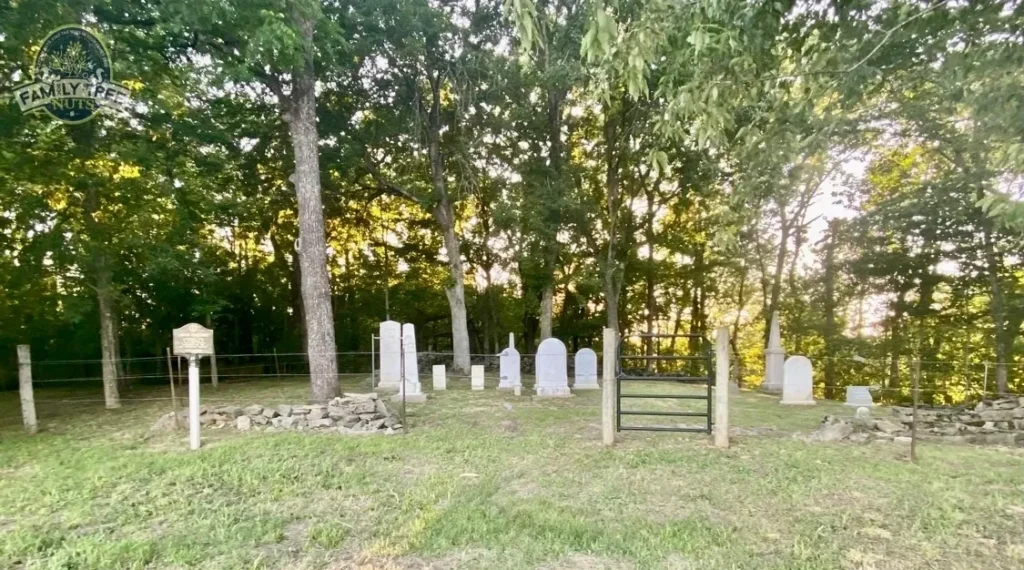
In October of 1779, Virginia opened their first land office, and Logan was granted 400 acres. For the last few years court had been held in Kentucky at Fort Harrod, but in 1781, Benjamin Logan donated land for an official courthouse. The law stated that in order to have a courthouse you had to have three things. One of them was a physical building for the courthouse. One of them was a tavern. And the third thing was a jail. It is interesting that a courthouse, a tavern and a jail are the three requirements. Politics, booze and jail sort of all goes together even today, doesn’t it? In 1886, the courthouse was removed from the fort and moved to the town of Stanford and this is the first mention of the town of Stanford.
During the Revolutionary War, Logan served under George Rogers Clark on raids north of the Ohio River on Native American camps. Also, during this time, Logan was elected to the Virginia House of Delegates and served between 1781 and 1787. He was one of the leading voices pushing for statehood of Kentucky.
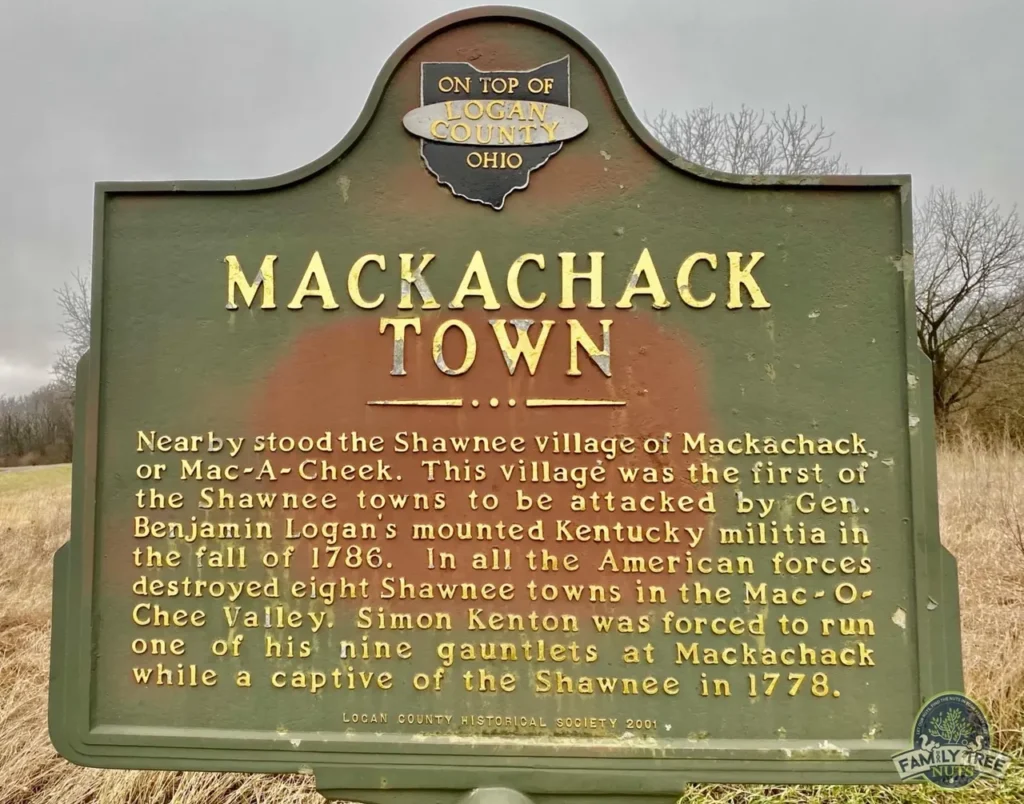
Kentucky had continually been harassed, attacked and raided by Native American tribes. The attackers destroyed crops and homes while killing and capturing many pioneers. In response to these raids, in October 1786, Logan led a force of Kentucky mounted militia to attack Shawnee towns in Ohio, on the Little Miami River and the Mad River. This campaign was called Logan’s Raid. Logan’s Raid attacked and burned 13 villages that were lightly defended because most of the warriors were off fighting George Rogers Clark, who was attacking along the Wabash River settlements.
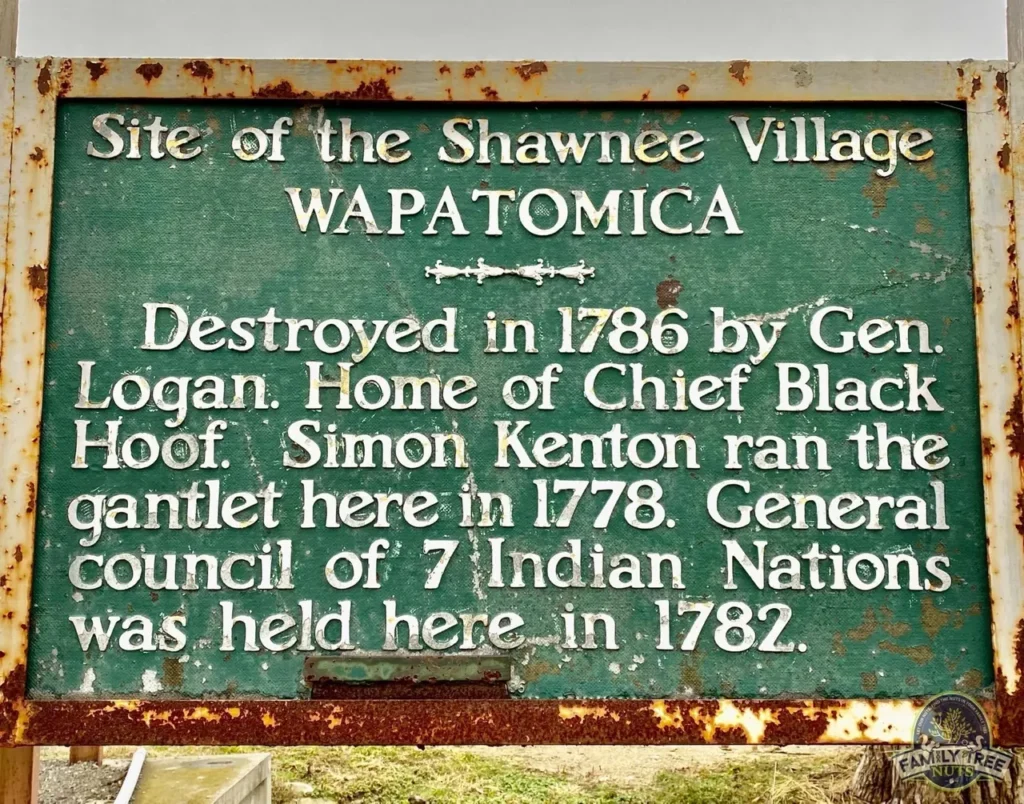
Logan ordered his men to not kill any Shawnee, who surrender. Logan’s men captured the 94-year-old Shawnee Chief Moluntha. It is said that Chief Moluntha surrendered holding a United States flag and a copy of the Treaty of Fort Finney, which was signed the year before. Men were left to guard Chief Moluntha so old chief took out his pipe and began smoking with the guards for a while. That’s when something horrific happened! Captain Hugh McGary came up to the men and used his rank to force himself to get the Chief Moluntha. Captain McGary was known to be a Scots-Irish hothead that a few years earlier at the Battle of Bluelicks, lead that foolish charge up the ridge. The Kentucky militia, including Daniel Boone were gathered on the other side of the river trying to figure out should they attack the ridge or hold back. Captain McGary plunged his horse into the Licking River and said, “Any man that ain’t cowards come with me!” and the Kentucky militia ran across the river, up the ridge and into an ambush. It was one of the worst white defeats on the frontier. This action tarnished McGary’s name for many years.
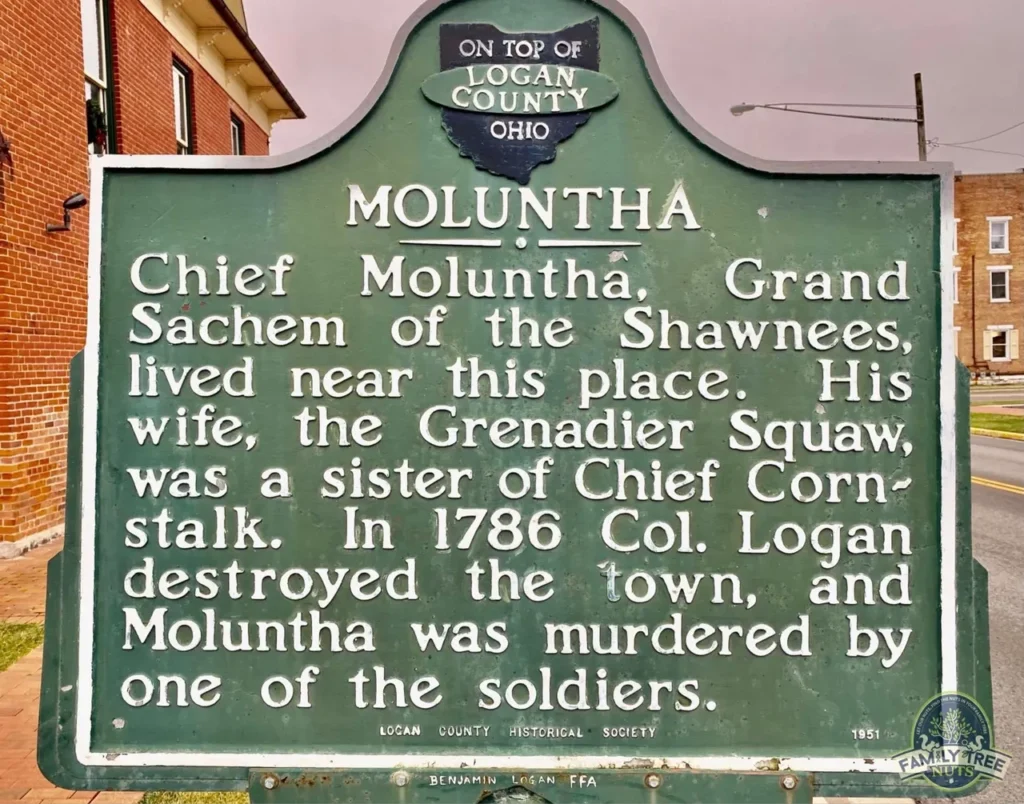
McGary walked up to Chief Moluntha and asked him had he been at the Battle of Bluelicks. Chief Moluntha didn’t understand what McGary said, and stated that he had been there at the battle. McGary then said, “God dammit, here’s some payback!” and murdered Chief Moluntha with his tomahawk and then scalped him. Benjamin Logan was furious, immediately relieved McGary of his command and court martial him. The result of the court martial was that McGary was not allowed to lead troops for a year.
This event infuriated the Shawnee and their attacks on Kentucky doubled. Once again, Hugh McGary was responsible for pioneer deaths. It must be mentioned that Hugh McGary is a complicated person and he had many reasons for his actions, but that’s a story for another day.
Logan eventually moved to Shelby County, Kentucky where he served in the Kentucky House of Representatives from 1792 into 1795. He twice ran unsuccessfully for governor, in 1796, and 1800. General Benjamin Logan died of a stroke in 1802 at his home in Shelbyville and is buried in a family cemetery on his land.
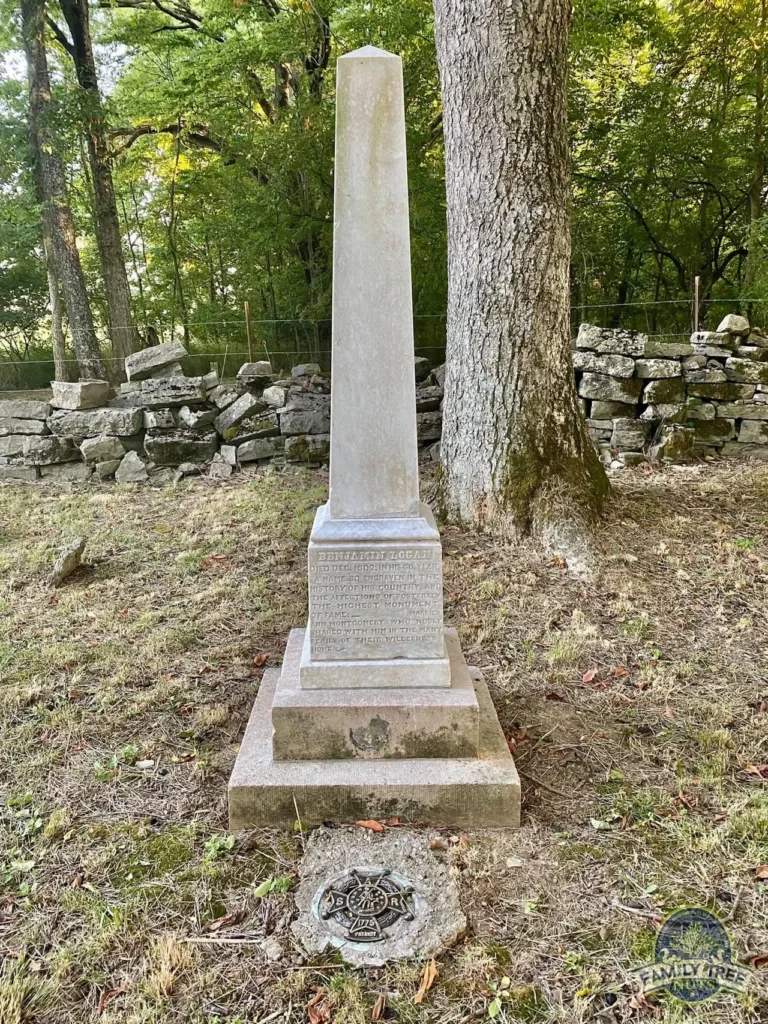
Also buried in this cemetery is Colonel James Knox. Colonel Knox was born in Northern Ireland around 1740, and there are disputes as to when he came to the United States. He might have been 14 and he might have been as young as four. In 1770, years before settlement, he led a team of 40 long hunters into Kentucky. Colonel Knox and nine other men established a camp that they called Fort Knox in modern day Greene County, Kentucky. This is not the same Fort Knox that is famous for the gold. After a year in the wilderness, the men returned back to Virginia in 1771. Knox served as a Representative of Kentucky County in the Virginia Assembly in 1788, and he was a Kentucky State Senator from 1795 until 1800.
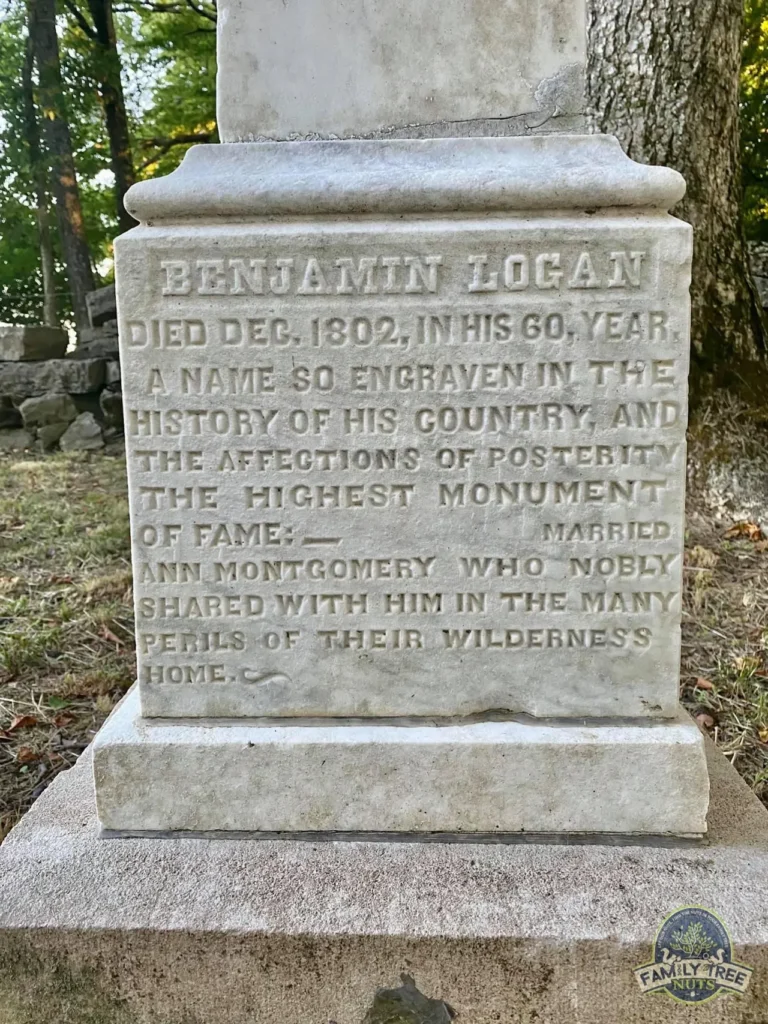
After Benjamin Logan’s passing, in 1802, Colonel Knox married Logan’s widow. Colonel Knox died in 1822 and he is buried in the front of Logan Cemetery. Like so many other pioneer cemeteries, Logan cemetery has a dilapidated stone fence with several members of the Logan family, and many of their friends. Interestingly just to the side of the rock wall are a couple of graves and behind the rock wall is the grave of one of Benjamin Logan’s sons. It’s a beautiful and peaceful final resting place for all these people that are buried here.
What an amazing life that General Benjamin Logan had. For decades he fought against the Shawnee and other Native American tribes. He’s one of the first settlers of Kentucky and he helped establish the government of Kentucky. It can be said with confidence that General Benjamin Logan is one of the most important founding fathers to Kentucky but sadly, he’s mostly forgotten today. Even his eternal resting place is largely unknown. Here at Family Tree Nuts, we are honored to keep General Benjamin Logan’s memory and legacy alive. Be sure to see the video below filmed on location at Logan’s grave.
-Col. Russ Carson, Jr., Founder, Family Tree Nuts
